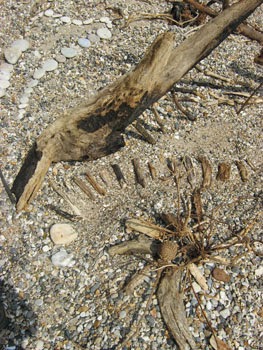Yesterday
So take these words
turn them into the
colour
of sky, a burst of cello
song
this snipe startling
from the underbrush
turn them into a few
grains of sand
turn them into yesterday
turn them into love
then let them go
none of us gets out of here
alive
© Roselle Angwin 2013
(first published online on Robert Wilkinson's now defunct but very pleasing poetry site: The Passionate Transitory. You can see RW's work on http://solitary-walker.blogspot.co.uk/ - lots of it to do with pilgrimage; a subject close to my own heart, as they say.)





















